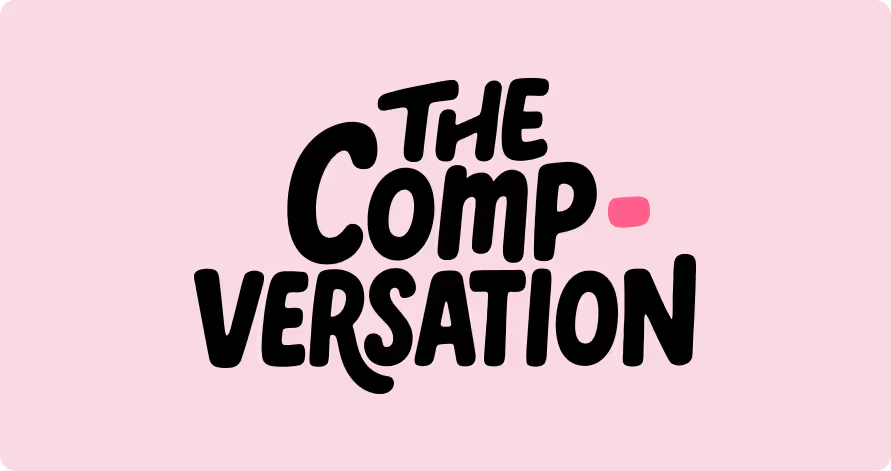We have good reason to be wary of pay transparency.
That’s according to Soufiane Hilali, Compensation & Benefits Director at Ogury (AdTech - 650 FTE), who responded to the previous edition of this newsletter: "I’ve believed in pay transparency since I first started working in this field. But I also find it daunting. To me, not being cautious about transparency and the idea of aligning pay policies (if they exist) with actual practices is a professional mistake.’
Despite these concerns, Soufiane has been working on pay transparency since 2012. To enhance the compensation policy of his company at the time, he set up salary scales with automatic progression, where employees advanced to the next level every few years provided their performance met expectations.
That was well ahead of its time in 2012! And it’s no coincidence that performance played a central role. It’s often the go-to criterion when companies want to make their compensation policies fairer and more effective.
After all, what could be more straightforward than rewarding employees based on their performance? The problem? Measuring performance isn’t always that simple.
The fact is, evaluating performance is already something of an art form. Trying to translate those evaluations into pay increases? That’s when things get really complicated.
From vague to precise
Every compensation decision must be backed by objective, justifiable criteria. That’s the expectation on employers in this new era of pay transparency.
In theory, this doesn’t prevent us from implementing individualised compensation policies designed to reward and retain top performers. To do this, all you need to do is base your compensation decisions on performance evaluations. At least, that’s the theory…
The problem? Performance evaluations are far from an exact science. They’re complex, prone to bias, and often based on nothing more than subjective impressions. At best, they give you an approximation of performance — not a precise measurement you can rely on.
The biggest challenge in getting performance evaluations right? The unconscious biases held by managers and peers, which can significantly impact ratings. These biased are deeply ingrained and notoriously difficult to eliminate.
According to three separate studies cited by Marcus Buckingham in the Harvard Business Review, more than half of the variation in the ratings employees receive from managers come down to the managers themselves, not the people being evaluated. The HBR article concludes that most of the HR data we have is highly unreliable. It’s no surprise, then, that the majority of CEOs don’t find the evaluation process useful for identifying top performers, according to a 2019 McKinsey study.
Of course, for certain roles — like sales — it may be possible to establish concrete, numerical performance targets. But even in these cases, objectives must be regularly updated to keep pace with a fast-changing environment. And what about the roles where performance is much more difficult to quantify?
I’ve lost count of the number of conversations I’ve had with HR managers about this dilemma: ‘Sales? No problem. But how do we evaluate developers?’
As HR professionals, it’s up to us to find solutions. Compensation is, at its core, about numbers. The challenge here is transforming vague notions into concrete figures — approximate evaluations into percentage increases.
Because in the era of pay transparency, approximate justifications are no longer good enough.
How to make performance evaluations fair
This is a challenge I encountered frequently during my years at Criteo. In an effort to make performance evaluations as fair as possible, we set up long, complex processes, including a peer-review system.
But even with these safeguards in place, eliminating bias altogether was almost impossible. Peer review might seem like a fair approach, but it can open the door to lobbying and favouritism — especially when money is on the table.
This problem was highlighted by Jessica Zwaan in her excellent three-part guide on the link between performance and compensation. Her guide outlines a precise method for measuring and calibrating performance evaluations, as well as predicting their impact on the compensation budget.
As Jessica puts it, conducting an effective performance evaluation is a long, complex process, which requires a significant time investment from managers and HR teams. And that’s a real challenge — especially considering that most managers are already stretched thin, struggling to manage growing responsibilities with limited resources.
In fact, Gartner identified leader and manager development as one of their top 5 HR trends and priorities for 2025. According to their research, 75% of HR respondents believe managers in their organisations are overwhelmed by the increasing scope of their roles.
Combatting human bias with science
So… how can we effectively link performance evaluations to compensation?
Option one is to implement long and complex evaluation and calibration processes, adding to the workloads of managers who are already overwhelmed. The alternative is to settle for a less exhaustive evaluation process. But that’s only feasible if we totally decouple performance from pay.
Because in the era of pay transparency, approximations won’t cut it. There is another solution: setting group objectives to smooth out perceived internal inequalities between roles that have a similar impact but a different market value.
But that raises another question: how do we reward and retain top performers?
The question remains open. One intriguing approach worth exploring is compensation based on skills rather than performance (I’ll dive deeper into this in another edition of this newsletter!). Personally, I’m optimistic about the role of science in helping us find better solutions.
I’m not just talking about artificial intelligence. After all, if AI is trained on biased or erroneous data, it can’t produce fair results. But I do believe science will ultimately help us develop more accurate and fair assessment methods — which we can then use in AI-driven models. More broadly, I think this is going to be one of the big positive shifts coming from the era of pay transparency: a surge of innovative solutions to old problems. In this case, evaluating performance.
I believe more and more companies will increasingly adopt performance evaluation-based salary increases. The increased scrutiny that the pay transparency era will bring will put pressure on companies to ensure that their performance evaluation processes are as fair as possible.
As a result, we’ll likely see new methods and tools — possibly AI-driven — for measuring performance as an indirect consequence of pay transparency.
I look forward to hearing your thoughts on this subject, especially around new or improved ways to evaluate performance — feel free to get in touch to share your experiences!
Let’s keep the conversation going
Here’s a selection of content to give you food for thought. Feel free to send me articles that you’ve found interesting on this subject!
Can AI do performance reviews? — Josh Bersin
In this article, Josh covers Rippling’s AI-based performance review module, and shares his predicted impact of AI on performance reviews. Don’t forget to scroll all the way down for a well-made 3-minute video on the history of performance appraisals (which I loved!).
So I Guess We Can Instantly Calibrate Performance Data Now??? 🤨 — Jessica Zwaan, jessicamayzwaan.medium.com
Jessica Zwaan presents the Incompass Labs algorithm, which allows HR teams to instantly calibrate performance evaluations using machine learning.
Top 5 HR Trends and Priorities That Matter Most in 2025 — Gartner
Insights from Gartner to help you prepare for the challenges facing HR teams in 2025. The most shocking for me? More than 50% of HR leaders say their current technologies don’t meet evolving business needs.


.avif)


